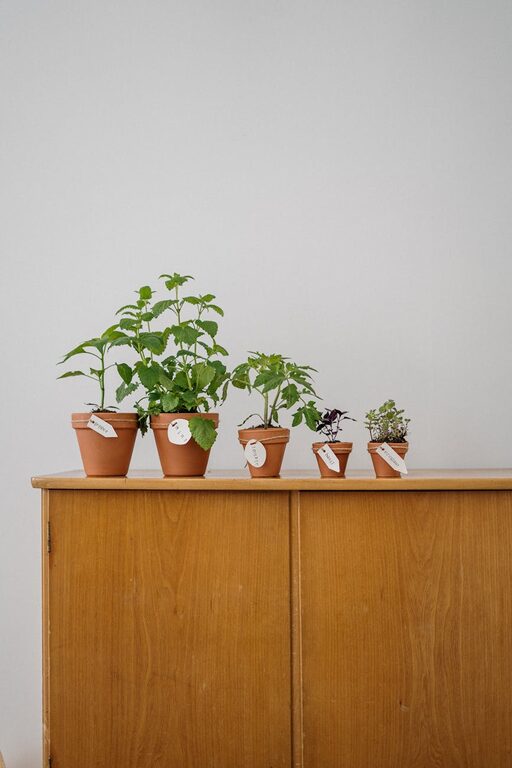Growing your own herbs indoors is a rewarding way to add fresh flavors to your cooking and greenery to your home. Whether you live in an apartment or simply want to enjoy garden-fresh herbs year-round, starting a small indoor herb garden is easier than you might think. In this guide, we’ll walk through everything you need to know to get started—including selecting herbs, choosing containers, and caring for your plants.
Why Grow Herbs Indoors?
Indoor herb gardening offers several benefits:
– Freshness: Have fresh herbs at your fingertips any time you cook.
– Convenience: No need to buy herbs that may wilt quickly in the store.
– Space-saving: Small containers fit windowsills, counters, or shelves.
– Air quality: Houseplants can help improve indoor air.
– Hobby: Gardening can be a relaxing and creative activity.
Choosing the Right Herbs
When starting out, consider herbs that grow well indoors and don’t require complicated care. Some popular, easy-to-grow options include:
– Basil: Great for Italian dishes and requires plenty of light.
– Parsley: Tolerant of moderate light and good for garnish or cooking.
– Thyme: A hardy herb that doesn’t need constant watering.
– Mint: Grows vigorously; keep it in a separate pot to prevent it spreading.
– Chives: Provide a mild onion flavor and regrow quickly after snipping.
– Cilantro: Prefers cooler spots and regular watering.
Select 3–5 herbs based on your culinary preferences and available space.
Picking the Perfect Spot
Herbs need enough natural light to thrive—ideally 6–8 hours of sunlight daily. Windows facing south or west are typically best. If your space has limited natural light, consider using a small LED grow light to supplement.
Important tips:
– Avoid placing plants near heating vents or drafty windows.
– Rotate pots every few days to ensure even growth on all sides.
– Keep the area well-ventilated but not too cold.
Choosing Containers and Soil
Containers
Select pots with good drainage to prevent root rot. Options include:
– Terra cotta pots: porous and allow soil to breathe.
– Plastic pots: lightweight and retain moisture longer.
– Recycled containers: just make sure to add drainage holes.
Avoid pots without drainage holes, or add a layer of gravel to the bottom for water flow.
Soil
Use a quality potting mix designed for indoor plants, not garden soil. Potting mix is light, drains well, and usually contains added nutrients. You might also want to add organic compost to enrich the soil.
Planting Your Herbs
Starting from Seeds
– Fill pots with potting mix leaving about an inch at the top.
– Sprinkle seeds according to packet instructions—some want only a light covering of soil.
– Water gently until soil is moist but not soaked.
– Cover pots with plastic wrap or a clear lid to maintain moisture until seeds sprout.
– Remove cover once seedlings appear.
Buying Seedlings
– Select healthy looking plants without brown or yellowing leaves.
– When transplanting, be gentle to avoid disturbing roots.
– Water immediately after moving to new pots.
Watering and Feeding
– Water when the top inch of soil feels dry to the touch.
– Use room temperature water to avoid shock.
– Most herbs prefer slightly moist, not soggy soil.
– Avoid letting pots sit in standing water.
– Fertilize every 3–4 weeks with a balanced liquid fertilizer diluted to half strength.
Pruning and Harvesting
– Regular pruning encourages bushier growth.
– Pinch off flower buds to focus energy on leaf development.
– Harvest leaves by snipping from the outer parts of the plant.
– Avoid removing more than one-third of the plant at once to keep it healthy.
Troubleshooting Common Issues
– Yellow leaves: Overwatering or insufficient light.
– Leggy growth: Not enough light, causing plants to stretch.
– Pests: Aphids or spider mites may appear; wipe leaves with mild soap solution.
– Root rot: Caused by poor drainage or excessive watering.
Tips for Success
– Keep a small notebook to track watering times and fertilizer schedules.
– Group herbs with similar lighting and water needs together.
– Rotate plants regularly for even exposure.
– Experiment with different herbs to find what you enjoy growing most.
Conclusion
Starting a small herb garden indoors is a simple, enjoyable way to bring fresh flavors and natural beauty into your home. By carefully choosing your herbs, providing adequate light and water, and practicing regular care, you can create a thriving indoor garden that enhances your cooking and your living space.
Give your plants a little love, and they’ll reward you with months of fresh, fragrant harvests. Happy gardening!

